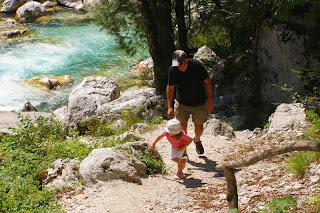 Birds
Birds
Quick & Fun Outdoor Activities for Kids
A few weeks ago I surveyed readers to determine their favorite outdoor activities to do with their children. The results showed that you overwhelmingly like camping and hiking. Frankly, I was surprised because these activities require a lot a preparation and planning. However, I totally get it because the rewards are great as both activities afford children an excellent opportunity to explore nature and spend valuable time with their families. Plus, summer is the perfect season for camping vacations and weekend hikes!

Now, with summer quickly winding down and children heading back to school, there will be less time to enjoy these activities and it will be harder to make time to enjoy the outdoors. All the demands of the school year have returned, with homework, after-school activities, less time off and, well, you know the drill. It makes the challenge of getting outside more difficult. However, with all those demands comes stress, so it’s even more important that kids (and you!) spend time in nature.
I thought it would be helpful if I provided a list of some outdoor activities for your children that don’t take much time or effort. They can be done even if you have only 30 minutes to spare one morning, afternoon or evening. Print it out and keep it on the fridge for quick reference for those days you need a quick idea.
1) Go for a walk around the neighborhood.
2) Explore your backyard with a magnifying glass.
3) Before bedtime, do a little stargazing on the front step.
4) Do some birding.
5) Pull weeds in the garden and look for bugs.
6) Look for interesting rocks and stones.
7) Play backyard games like tag or hide-and-seek.
8) Eat an afternoon snack outside on a blanket in the grass.
9) Try to catch butterflies with a butterfly net.
10) Spread a blanket out on the grass, lie down and look up at the clouds.
Not only are all of these activities fun, but they also promote relaxation, creativity and several include a splash of exercise!
Please comment on this post and add your own ideas. The school year is long, vacations are short, and we can all use some time to connect with nature, even if it’s only for a few minutes a day!



